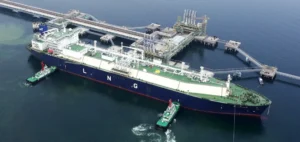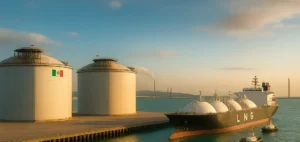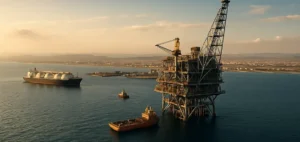Natural gas demand in Africa is expected to grow by an average of 3% per year by 2050, according to the “Global Gas Outlook Report 2050” published by the Gas Exporting Countries Forum (GECF) on March 10, 2025. This growth represents the fastest rate observed globally. The volume of gas consumed on the continent will rise from 170 billion cubic metres (m³) in 2023 to 385 billion m³ by 2050, thereby increasing the share of natural gas in Africa’s energy mix from 16% to 21%.
The report highlights that this growth is driven by several factors: rapid population growth, accelerated urbanisation, and the urgent need for electrification. Nearly 600 million people in Africa lack access to electricity, and over a billion people still use biomass cooking systems, making the increase in natural gas production and consumption crucial. Electricity production is expected to account for 66% of the additional demand for natural gas on the continent, rising from 934 terawatt hours (TWh) in 2023 to 2630 TWh in 2050, representing an average annual growth of 3.8%.
Growth of electricity production
The electricity production sector in Africa will be the main driver of the increased demand for natural gas. The need for electricity, essential for the growing urbanisation and industrialisation, will increase significantly. Natural gas, being one of the least polluting options for electricity production, is expected to play a key role in the continent’s energy transition. By 2050, Africa will see its electricity consumption triple, with a significant contribution from natural gas in new energy investments.
Industrial and residential demand
Natural gas will also need to meet the rising demand from heavy industries such as petrochemicals and methanol production, which are expected to see significant growth. At the same time, the residential and commercial sectors, particularly in Sub-Saharan Africa, will see increased adoption of gas to replace traditional biomass cooking systems. This dynamic aligns with the growing prioritisation of access to modern energy by governments and businesses.
Expansion of natural gas production in Africa
Natural gas production in Africa is expected to increase by an average of 2.5% per year by 2050, one of the highest growth rates globally. Continental production will rise from 252 billion m³ in 2023 to 502 billion m³ by 2050. This increase will be supported by countries such as Nigeria and Mozambique, which have substantial reserves and expanding production capacities. Nigeria, with its vast reserves of associated gas and recent reforms in its oil sector, could reach a production of 127 billion m³ by 2050.
Mozambique and the emergence of new producers
Mozambique, with its liquefied natural gas (LNG) projects such as Coral South FLNG and Rovuma LNG, is also well positioned to play a major role in increasing production in Africa. The country could produce more than 95 billion m³ by 2050. Furthermore, countries recently joining the ranks of gas producers, such as Mauritania and Senegal, are expected to reach respective productions of 26 billion m³ and 20 billion m³ by the same date, thanks to recent discoveries.
Global natural gas demand
Globally, natural gas demand is expected to increase by 32% by 2050, reaching 5317 billion m³. This increased demand will be largely driven by regions in Africa, Asia-Pacific, the Middle East, and Latin America. In contrast, consumption is expected to decline in Europe (-1.4% per year) and North America (-0.2% per year), highlighting the relatively faster growth of demand in emerging markets, particularly in Africa.





















